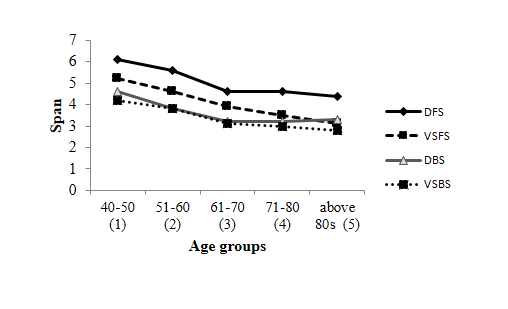

Two trials were administered for each span (sequence length ranging from 2 to 8), in forward and reverse order, in both tasks. The same examiner administered and scored both tasks in all participants. The study was approved by the Universidade Federal de Minas Gerais Ethics Committee and conducted in accordance with the Declaration of Helsinki. Psychometric properties of the Brazilian version of Pfeffer's Functional Activities Questionnaire.

Assis Lde O, de Paula JJ, Assis MG, de Moraes EN, Malloy-Diniz LF. Mattis dementia rating scale (DRS) normative data for the Brazilian middle-age and elderly populations. Foss MP, Carvalho VA, Machado TH, Reis GC, Tumas V, Caramelli P, et al. Diagnosis involved cognitive and functional assessment, performed with the Brazilian versions of the Mattis Dementia Rating Scale 4 4. To analyze the reliability of the Digit Span and Corsi Block-Tapping tasks, we assessed 25 older adults with low formal education referred for neuropsychological assessment due to cognitive-functional complaints (13 patients with mild and 12 with major neurocognitive disorder, irrespective of etiological diagnosis). Clinical significance: a statistical approach to defining meaningful change in psychotherapy research. follow-up) are likely due to measurement error (imprecision of test measures) or are associated with an external factor (the intervention, a placebo, or other non-documented causes). These are simple statistical procedures used to examine whether changes in test scores over time (e.g., pre-intervention vs. Test reliability is an important measure used to estimate test precision and to create reliable change coefficients. However, we are unaware of studies investigating the reliability of these tasks for WM assessment in older adults diagnosed with neurocognitive disorders. Both tests are commonly used in neuropsychological assessment of older adults with a diagnostic hypothesis of pathological aging (e.g., minor and major neurocognitive disorders). The Corsi Block-Tapping task uses nine cubes placed on a wooden board to assess visuospatial WM.
#Working memory and backward digit span series
The Digit Span uses escalating series of numbers from 1 to 9, presented in a randomized fashion, to assess verbal WM. In both tests, the subject must repeat a series of stimuli in the presented order (forward) or in the inverse order (backward). The backward span of the Corsi Block-Tapping Task and its association with the WAIS-III Digit Span. Kessels RP, van den Berg E, Ruis C, Brands AM. The Digit Span and Corsi Block-Tapping tasks are frequently used in WM assessment. Furthermore, as a cognitive process, WM is key to understanding functional capacity in clinical samples. Despite the lack of a consensus definition and theoretical model to explain this function, its assessment is a key aspect in clinical practice, both for diagnostic and intervention purposes. Working memory: theories, models, and controversies. Working memory (WM) is a core aspect of executive function, related to temporary storage of information to be manipulated and used by other cognitive processes.


 0 kommentar(er)
0 kommentar(er)
